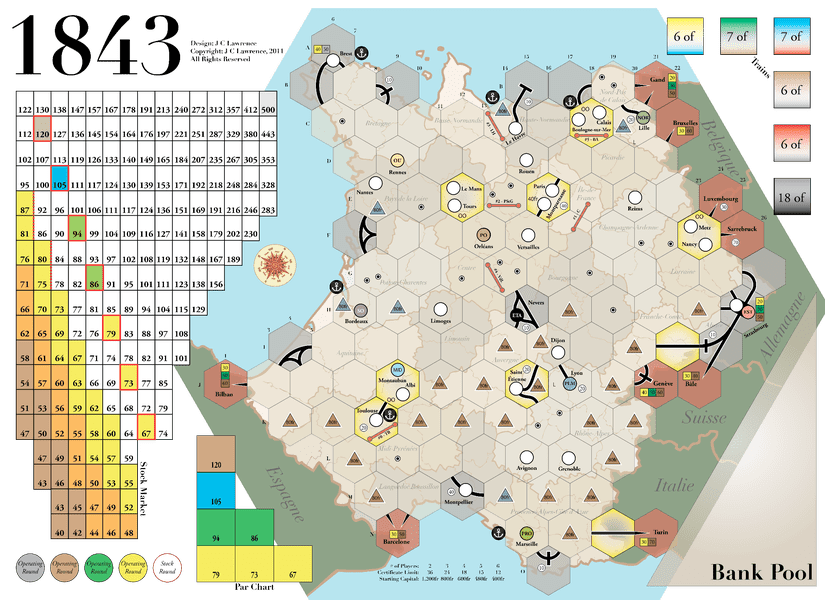1843 (2011) Board Game
1843 is a board game that was released in 2011 and designed by J. C. Lawrence. It falls under the categories of Trains and Transportation, and features gameplay mechanics such as Auction/Bidding, Network and Route Building, Stock Holding, and Tile Placement. The game is best played with 4-6 players and has a runtime of approximately 360 minutes.
Game Components of Mansion of Happiness
How To Setup Mansion of Happiness
To set up the game, players place their tokens at the starting point of the spiral track. Each player is given the rules and the teetotum or metal pointer. The game board is unfolded and placed on a flat surface.
Gameplay Mechanics and Game Objective
– Players roll the teetotum or spin the metal pointer to determine the number of spaces to move.
– Landing on virtue spaces advances the player, while landing on vice spaces forces them to retreat.
– The game teaches moral lessons through its spaces, promoting virtues and condemning vices.
Player Experience
The game provides a moral and educational experience, designed to instruct children on the importance of virtues and the consequences of vices. Players navigate through a visually appealing and sometimes colorful board, learning as they progress. The gameplay is straightforward, making it accessible to children, while the moral lessons add a layer of depth.
Pros
Cons
Personal Thoughts on Mansion of Happiness
This game is ideal for those interested in historical board games and educational experiences. It is particularly suited for families looking to teach moral values through play. However, due to its age and the context in which it was created, it may not appeal to everyone, especially those seeking more complex or modern gameplay mechanics.
We are supported by our audience. When you purchase through links on our site, we may earn an affiliate commission, at no extra cost for you. Learn more.

